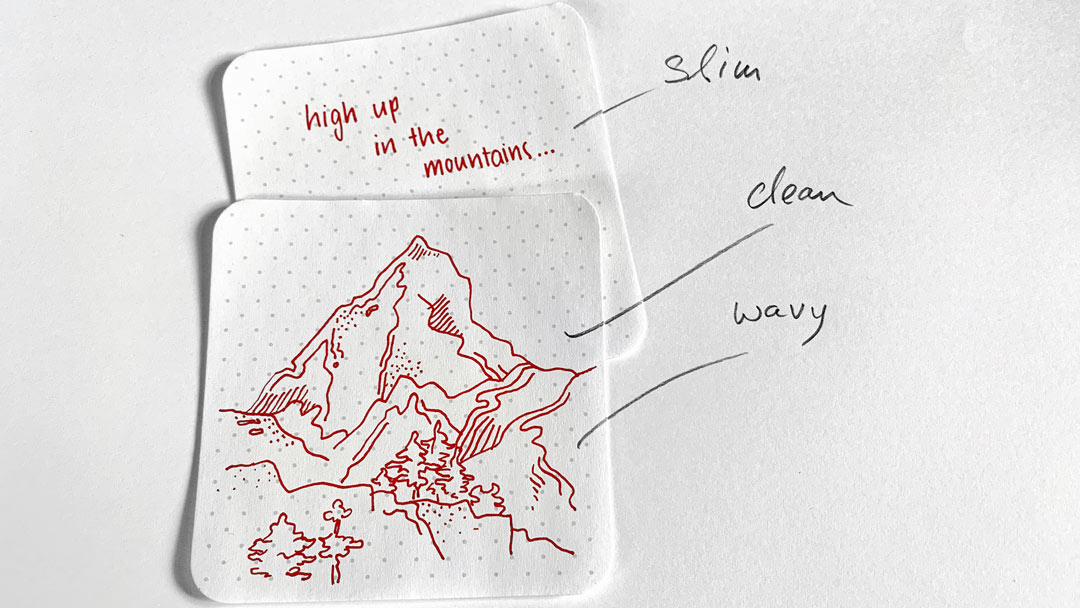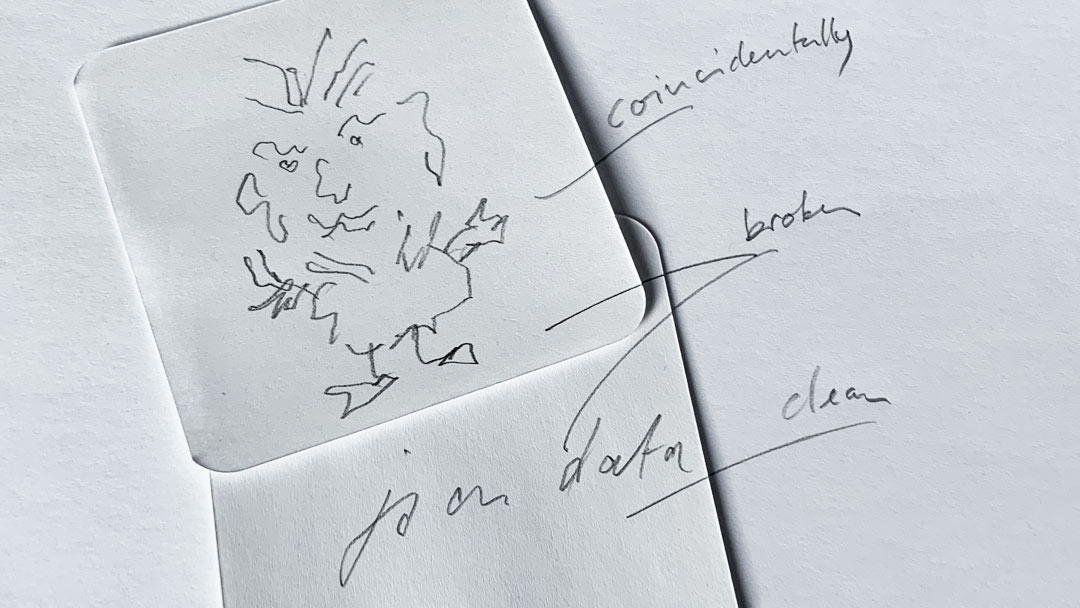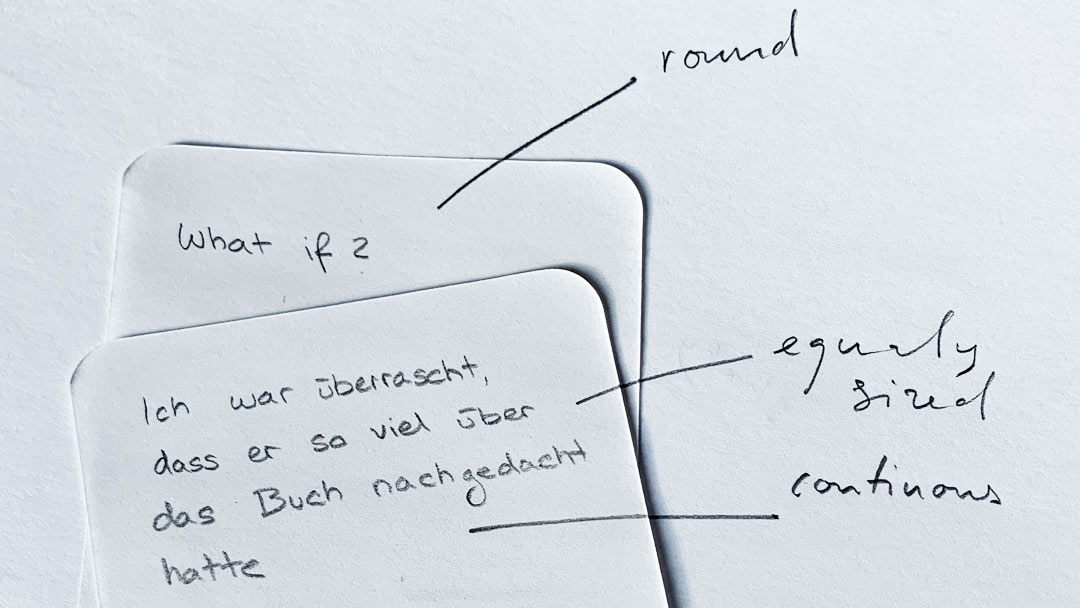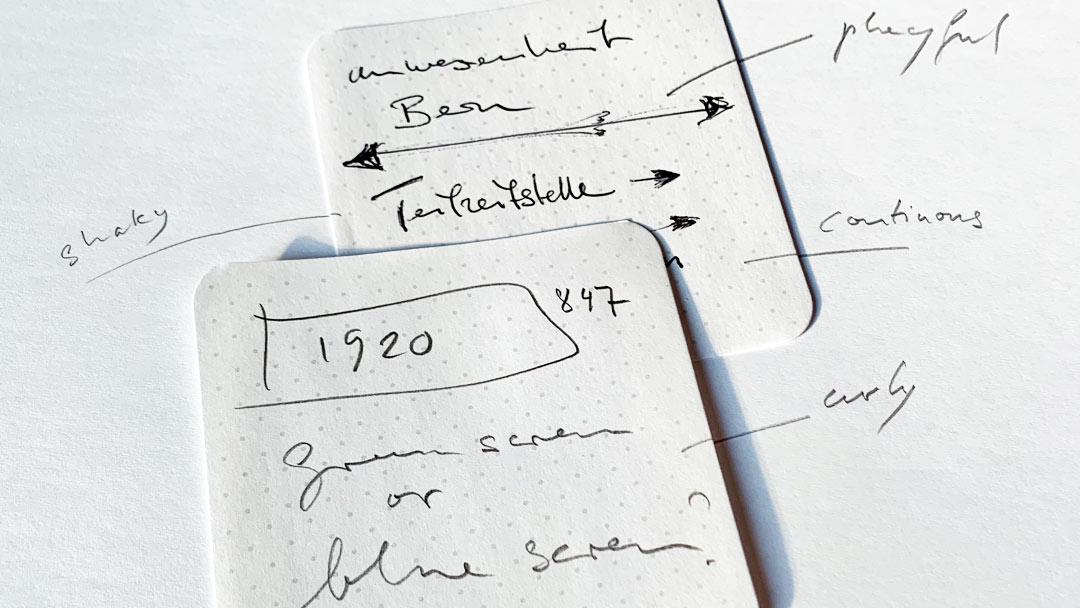Rule 1 | Let the line flutter
Lesson 3 | Your handwriting is your style
20 min. |
Everyone has his own style of drawing. You don’t have to look for your style, because it is there. Your radii of the joints and bones in your hand shape the strokes. With a little temperament added you will find your style.
So you learn to understand where to find the style. This exercise helps you to discover your own style for the pen stroke.
Step 1 | Grab and get a piece of paper from a notepad with some words, written by your handwriting to identify your style
A It is important to know what your handwriting looks like. Identify your style driven from your handwriting in the manor of stroke and curls you make while writing. These forms are manly shaped by the anatomy of your hand.
Name at least three adjectives that describe your style.
5 min. |
Here are some examples of the handwriting of notes taken and analysed.
Can you see the differences of the handwriting in the notes?
Can you see that different people wrote these texts?
Maybe you find further adjectives for the style of the handwriting …
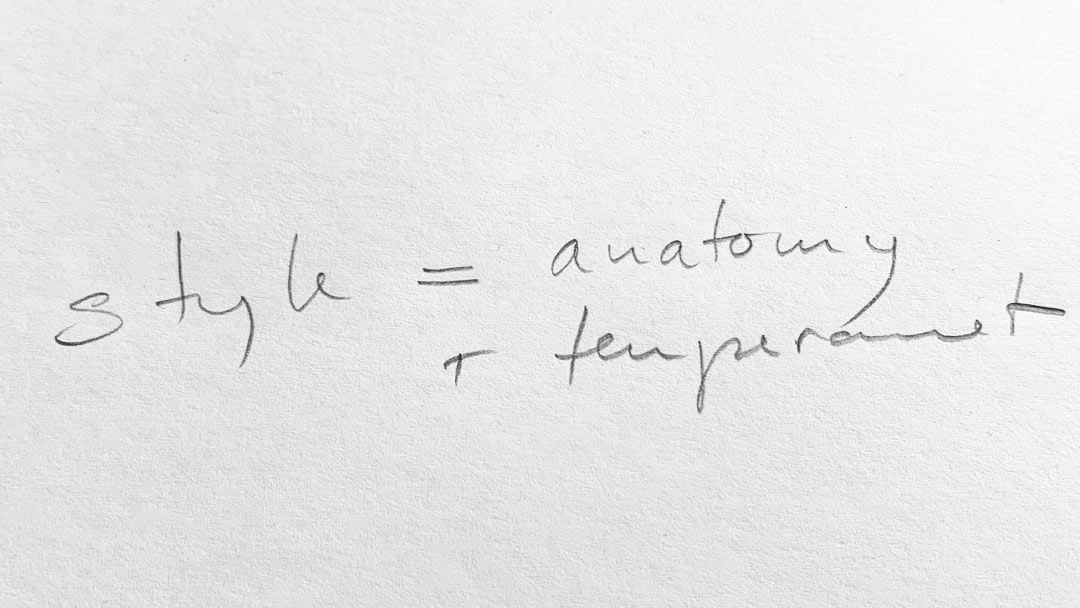
Step 2 | Watch the film and understand the why of similarity in stroke and handwriting
The beginnings and the ends as well as the sizes and length of strokes are the shaper of your style. this is how your style is formed.
Are you able to recognize style in strokes and handwritings?
6 min. 04′ |
Script
I’m asked again and again in class: But how do I bring my style? What is my style anyway? Or even Sketch&Draw does not allow me to have my own style?
These are all unnecessary worries, why, I explain here.
The style has something to do with the anatomy of the hand.
Then there is also some temperament: so
Style = anatomy and temperament
You cannot adopt any style you want, in the same way, that you cannot adopt the temperament of another person.
Let’s take a closer look at this: almost everyone can recognize a van Gogh, but why?
The style has something to do with the radii of our hand and finger joints, and thus with our anatomy. It’s about the proportions of the length of the bones and the radii of the joints, that is, about this length and this radius and how the two interact. And also with the whole hand up to the arm.
You can minimize them by not placing the ball of your hand on the paper. Instead, you should guide the stroke in a floating position. Then the radii don’t play individually, which by the way is very unattractive – because it is purely motorized. It is not nice to see such radii.
If you want to work a little less scrawly, it often helps to hold the pen a little further back to get a nice sketched line.
This is, by the way, one reason why many artists stand during the work, because then all parts of the anatomy play together, which finally leads to a more complex line.
Back, there is a very simple exercise that brings us closer to our style. This is our own handwriting.
That is the handwriting of Rembrandt. This is a drawing by Rembrandt. You can see the similarity in the line between the writing and the drawing line.
So let’s write one or two letters without characters, just strokes.
The first letter is a meticulous love letter, the second one is an armoured letter in which we complain about something.
The letter has no words, only lines and a mise en page, so a balanced design on the page.
This is my dear letter
.
.
.
This is my harnessed letter.
.
.
.
We notice the line is controlled. Yes, why? Because we have practised these strokes since the first day of school.
I see, why a letter you want to know? Yes, that’s easy. We are also practising the sense of form for the surface.
Try it out, sketch two letters.
Step 3 | Write your two letters like explained in the video above.
Write one letter with a soft intention. Write a second letter with a furious or harnessed intention. Keep care of the over all layout from the text on the page.
What is the temperament making with your stroke? How does it change?
10 min.
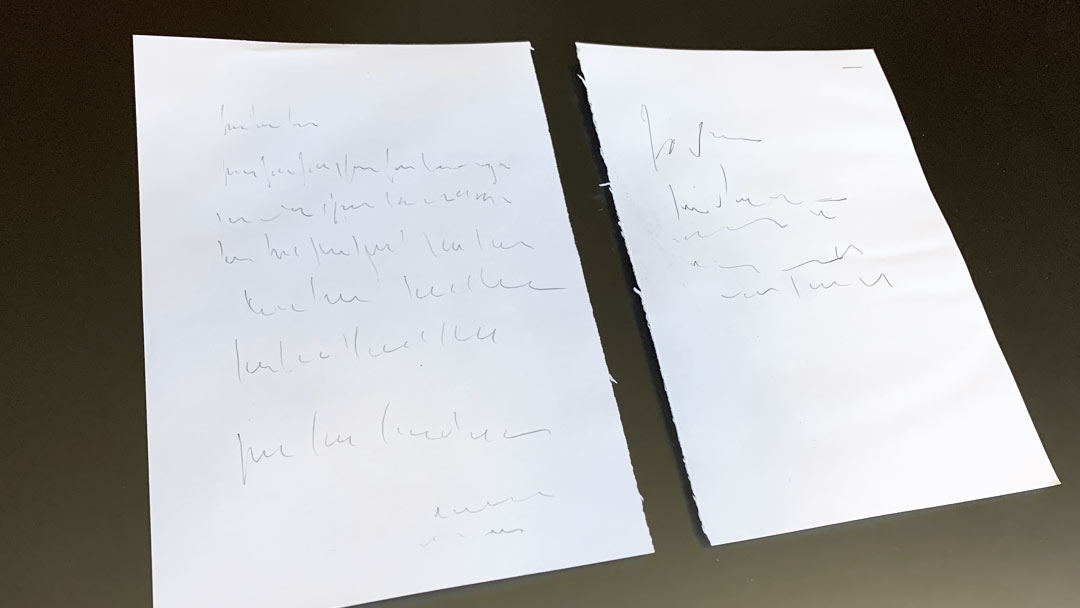
The difference of temperament
Left is the more friendly and soft letter. At the right side is the harnessed letter. So always decide what temperament you want to add to your strokes shaped by your anatomy to round up your style.
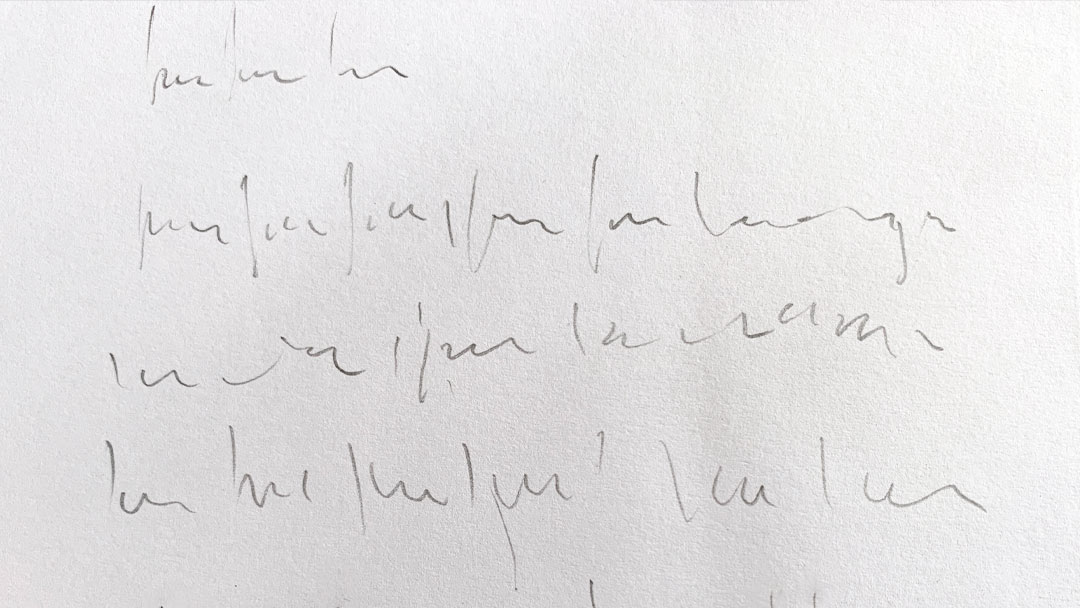
Tryout of soft lines imitating characters and text. A trial of a lovely attitude.
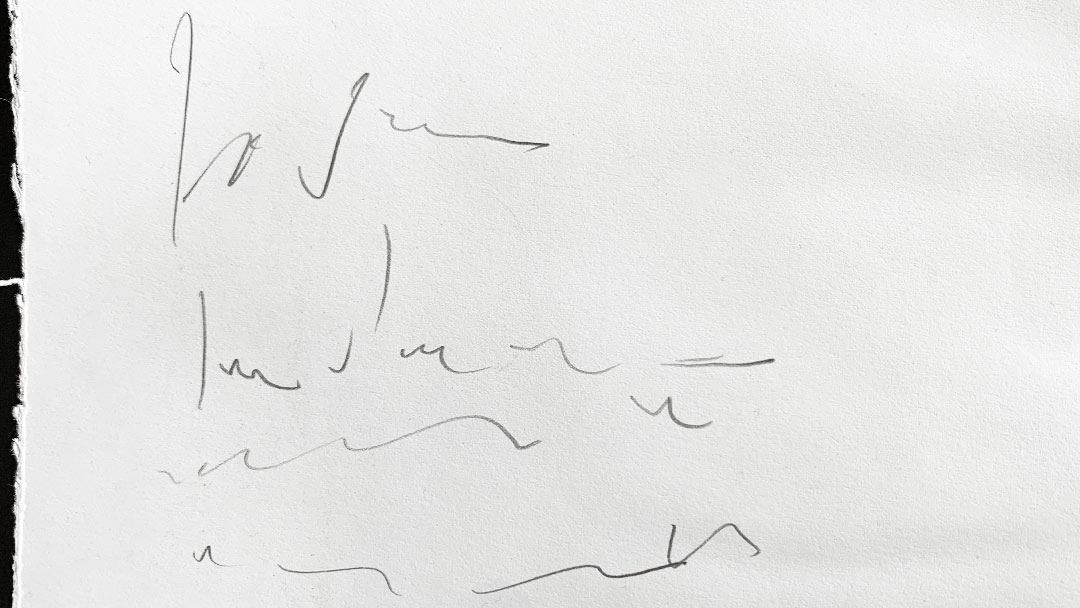
An example of furious strokes like characters in a letter. Tryout of temperament in strokes.
ASSIGNMENT | "Write your two letters and load them up
To upload, use the buttons further down.
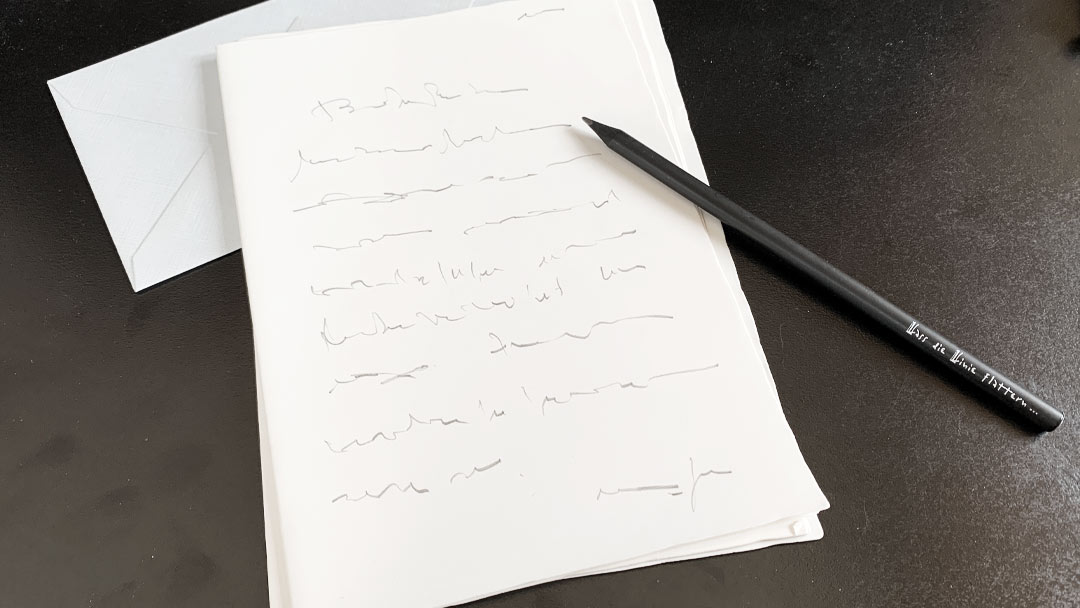
Free trial
Try one lesson and decide if you want to do the whole course. Click for the free trial ...
Certificate
If you want to achieve a certificate that proves your sketching skills, get all your information here ...

